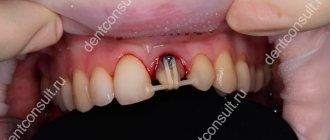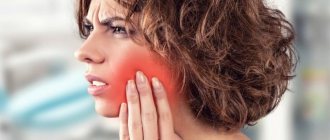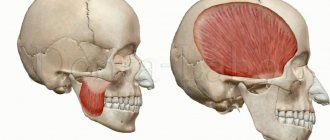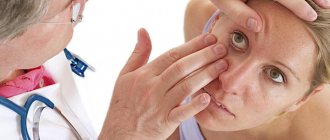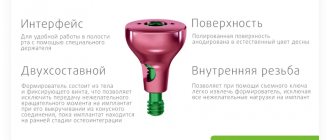Symptoms of manifestation
Bruises on the face are difficult to ignore. It is characterized by knowledge of all standard symptoms, such as:
- Painful sensations in the facial area. And they are usually felt strongly because the ends of the facial nerves are among the most sensitive;
- Tissue swelling. This manifests itself as swelling of the skin, which may appear thickened upon palpation. The severity of edema depends not only on the severity of the injury, but also on the thickness of the skin and the internal structure of the tissues. Therefore, the area around the mouth and face is most susceptible to swelling;
- Bruises, bruises and hematomas. They arise as a result of damage to blood vessels and the accumulation of platelets in the damaged area. It’s worth saying right away that the deeper they are under the skin, the later the reaction will appear, but, unfortunately, the longer it will take. For this reason, many people start using ointments and gels for bruises even before visible signs appear;
- Feeling numb. This occurs in cases where the fibers of the facial nerve were directly affected during the injury. If nerve damage is very severe, there is a risk that reduced nerve activity may persist;
- Disruption of various areas of the face. Examples include: inability to see if the eye is swollen, difficulty breathing if the nose is injured, difficulty chewing food if the jaw is injured;
- Open bleeding. Observed when the skin is damaged at the site of the bruise and there is an open wound or deep scratch;
- Nausea, vomiting, loss of consciousness, convulsions. Such serious symptoms can occur if a bruise of the soft tissues of the face is accompanied by a traumatic brain injury and, as a consequence, impaired brain function.
Bruises and bruises are symptoms of contusion of the soft tissues of the face.
Of course, each of these symptoms may vary in severity in each individual case. Much depends on the individual characteristics of the body, such as the thickness of the skin or the elasticity of blood vessels. So, with one type of injury, one person may only have swelling, while another may have a severe hematoma.
Mild brain contusions
They are not accompanied by a threat to life and manifest themselves with the following symptoms:
- loss of consciousness, lethargy, drowsiness, memory loss;
- dizziness, vomiting;
- changes in heart function, increased blood pressure;
- neurological disorders (tremor of the eyeballs, lack of pupillary response to light, decreased muscle tone, anisocoria);
- meningeal symptoms (neck muscle tension, Brudzinski and Kernig symptoms).
There are no serious consequences for mild brain contusions. The prognosis for the patient is favorable. Symptoms disappear within 3 weeks.
Main services of Dr. Zavalishin’s clinic:
- consultation with a neurosurgeon
- treatment of spinal hernia
- brain surgery
- spine surgery
First aid
First aid is recommended for injuries to the soft tissues of the face, regardless of the force of the blow. Here are three basic steps in this situation:
- Place something cold on the bruised area. This could be ice, snow, a compress soaked in cold water, or even a chilled metal spoon. Cold helps constrict blood vessels, reducing the risk of bruising under the skin. However, there are two things to keep in mind. Firstly, facial skin is quite thin and cannot be exposed to prolonged exposure. The optimal time is 15-20 minutes. The procedure can be repeated after 2 hours. Use material that protects the receptors from hypothermia. The second point is that the effectiveness of this method is available only in the first half hour after injury;
- If there are signs of skin trauma, be it wounds or abrasions, it is important to treat them with antiseptics. The most common of them are the well-known hydrogen peroxide, herbs, and a very weak solution of manganese solution. This must be done very carefully, since every touch to the wound can cause pain to the victim;
- Anesthesia. If the sensations are strong, you should turn to painkillers. Among them are Ketone, Ketorol, Ibuprofen. Before use, be sure to read the instructions.
First aid for bruised soft tissues of the face includes applying ice.
In most cases, the listed first aid measures for bruises are sufficient. However, if the injury is much more serious and the victim experiences heavy bleeding or convulsions, then the first step is to call an ambulance. When traveling, control bleeding with a tourniquet or position the person so that they do not risk swallowing their tongue.
It is important to remember that the method of providing first aid will affect the result of further treatment of facial bruises and the likelihood of developing complications.
How to remove a bruise from a blow?
Hematomas from blows can be removed in two ways: using medicinal drugs and compounds or by masking .
The choice of method depends on the extent of the damage and how quickly the injury needs to be removed.
First aid
Keep in mind! Direct treatment should always be preceded by first aid.
The further process of resorption of the bruise depends on this, so after injury, the following steps should be performed as soon as possible:
- Apply something cold to the bruise . Ideally, this is ice, but in “field” conditions you can use any frozen product from the freezer, a bottle of cold water, even ice cream purchased at the nearest store, and any cold metal object. The main thing is to ensure cooling of the damaged area within the next half hour. Cold should be applied not only directly to the hematoma, but also to the entire cheek to avoid the spread of internal hemorrhage to adjacent tissues.
- Limit heat exposure . Excessive heat during the first day can provoke an increase in bruising, for this reason it is forbidden to warm the damaged areas with compresses - this will be needed in subsequent days.
- Stop nosebleeds . If an eye injury is accompanied by such a symptom, you should not blow out excess blood, as this can lead to the spread of the hematoma to the area near the nose and to the cheek.
The next day, if there are no open wounds in the bruise area, you can perform warming .
Remember! Any methods are suitable for this - from a freshly boiled egg to heated salt wrapped in natural fabric or in a bag made of it.
It is optimal to perform warming in the morning and evening throughout the healing period.
Medications for bruises
Elimination medications and ointments are often found in home medicine cabinets.
And if you don’t have them, you can buy such products at any nearest pharmacy.
Among these medications, the most common are the following:
- Heparin ointment. Contains the active substance heparin, which promotes rapid blood clotting and eliminates swelling and inflammation. When applying this ointment daily to a bruise twice a day, the effect is visible after the second day. The course of treatment can last differently - it depends on the severity of the damage and the condition of the tissue.
- Badyaga. Can be used both in the form of a powder, which is diluted with water, and in the form of a gel. In both cases, it is enough to smear the bruise once a day for a week.
- Lyoton. Another product based on heparin, but in a higher concentration, resulting in a faster result. The ointment must be applied three times a day.
- Bruise-Off . A modern product in the form of a gel based on an extract from leeches, which is often used by athletes. The active ingredients promote rapid resorption of hemorrhages and neutralize the color of the bruise. At the same time, the cream has a shade characteristic of normal skin, so this drug has a slight additional masking effect.
- Troxevasin. Elimination of bruises is not the main purpose of such an ointment, but due to its absorbable effect, this remedy is successfully used in this direction. Additionally, troxevasin helps strengthen the walls of blood vessels, which leads to rapid healing. It is enough to apply this ointment only during the first day from the moment the bruise forms, but every hour.
You can read more about other creams here.
Diagnostics
A bruise is easy to diagnose, but only doctors can determine its severity and possible complications. Therefore, if for any reason the injured area is bothering you, it is better not to waste time and seek professional help. The diagnosis can be made:
- inspection;
- palpation;
- Assessment of symptoms and complaints;
- In some cases, an ultrasound or x-ray examination may be required.
Diagnosis consists of determining not only the presence of a bruise, but also its severity. There are four degrees:
- First degree. This is the easiest and least dangerous option, involving a slight change in the structure of the subcutaneous tissue. There is no bleeding or hematoma, but blue skin discoloration is quite possible. For the first degree of injury, visiting a doctor is usually not required. It is quite possible to limit yourself to home remedies, which, with the right approach, will help eliminate symptoms in 5-7 days;
- Second step. In this case, significant damage to the subcutaneous and muscle tissue occurs. Severe swelling, pain and even hematoma may appear. It is better to treat such a bruise with medications together with physiotherapeutic procedures;
- Third degree. It damages not only muscle tissue, but also tendons. In some cases, the integrity of the skin may be compromised. Since there is a risk of developing an infectious process, examination by a doctor is mandatory.
- Fourth degree. This is the most severe and dangerous degree of injury. It is always accompanied by injuries not only to soft tissue, but also to bone tissue. In this case, there is a high risk of developing various types of complications. It is imperative to seek qualified medical help.
Accordingly, the type of treatment will directly depend on the degree and nature of the bruise.
Treatment
Treatment methods for bruises can be divided into two large groups: traditional in the form of drugs and treatment methods, and non-traditional in the form of traditional medicine. Ideally, you can combine techniques from both groups. This solution will help you get rid of bruises in less time.
Medication
If the situation does not require hospitalization, the bruise is treated using standard methods. Namely:
- Preparations for external use: gels, ointments, creams;
- Physiotherapeutic procedures. These include electrophoresis, heating, laser therapy. All these procedures are aimed at eliminating subcutaneous clots and stimulating skin regeneration.
Creams, ointments, and other treatments for bruises are widely available.
In every pharmacy you can find a huge selection of such products. But when choosing, it is important to pay attention to the composition, influence and age restrictions. Not all products are suitable for children.
With regular and correct use of the ointment, you can get rid of bruises and swelling within a few days. And if you supplement your treatment with physical therapy, you can expect results even faster.
Traditional methods
Bruises and bruises can also be treated with traditional medicine. The only rule is that you can start using them a few days after the injury.
Among the folk recipes for bruises and bruises on the face it is worth mentioning:
- Cabbage leaf or raw potato. They should be applied to the damaged area. Thanks to this, swelling quickly decreases;
- Honey. Has a good laxative and anti-inflammatory effect. You can even not limit yourself to the area of the bruise, but apply honey all over your face, creating the appearance of a mask;
- Camphor oil. To obtain the effect, it must be applied with light rubbing movements;
- Compresses. It is best to cook them with onions or salt;
- Alcohol-based compresses. In this case, the rosemary plant can be the basis. Has a warming and antiseptic effect;
- Arnica decoction. This measure is applied not externally, but internally. It not only strengthens the immune system, but also stimulates regenerative processes.
Applications with honey are a folk method for treating bruises of the soft tissues of the face.
And, of course, one should not underestimate the influence of standard massage measures in the form of light stroking and rubbing.
Severe brain contusions
Such an injury poses a threat to human life. The consequences of a severe brain injury are serious, and recovery takes several months. Often the victim never fully recovers.
The following signs indicate a severe brain injury:
- loss of consciousness, after which the person is in stupor or a state of stupor;
- temperature rise to 41°C;
- psychomotor agitation, convulsive syndrome;
- disturbances in the respiratory and circulatory system (up to the need for artificial ventilation);
- neurological symptoms (dilation or constriction of pupils, “floating” eyeballs, difficulty swallowing, paralysis, loss of speech);
- pronounced meningeal signs.
Severe brain effects regress extremely slowly. Recovery takes a long time. In some cases, the patient becomes disabled.
The most common consequences of brain contusions are:
- inflammation of the meninges;
- epilepsy;
- atrophy (decrease in tissue volume) of the brain;
- hydrocephalus accompanied by intracranial hypertension;
- scars on the meninges and tissues;
- cerebrospinal fluid cysts;
- post-traumatic porencephaly;
- liquorrhea (due to a skull fracture).
These conditions are accompanied by movement disorders, dizziness, impaired coordination, speech, mental disorders, headaches, decreased intelligence, and convulsive seizures.
Consequences
Complications with bruises are quite possible. It all depends on the nature of the injury and which area of the face was damaged. Possible consequences include:
- Nerve damage. completion. This is quite dangerous, since it is not always possible to fully restore their functionality. This means that the affected part of the face may stop moving;
- Deterioration of vision. If the area around the eyes is bruised, there is also the possibility of damage to the nerve responsible for visual functions. Again, the outcome depends on the nature of the injuries. Both partial and complete loss of vision is possible, which is much less common;
- suppuration at the site of the bruise in the form of an abscess;
- bleeding that, if not treated immediately, may lead to fainting or shock;
- Cyst formation in the presence of hematomas.
In case of serious injuries, the bruise may be accompanied by a concussion, deformation of the bones of the nose or jaw. As a result, a person may later suffer from conditions such as sinusitis or sinusitis.
Prevention
Almost all of us have had bruises on the soft tissues of our faces in our lives. Unfortunately, this cannot be completely prevented. However, in order to at least minimize the risk, it is necessary to take basic precautions and safety measures. When it comes to children, it is important to teach them from an early age how to avoid traumatic situations.
If facial bruises do occur, do not leave it unattended and take appropriate measures. You can do this yourself or seek medical help.

